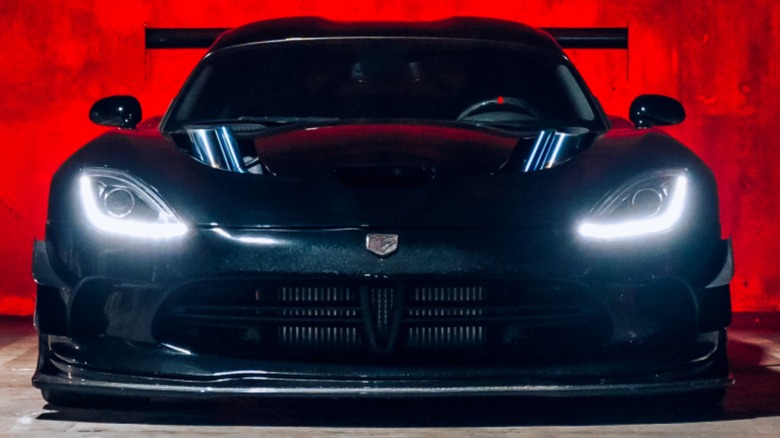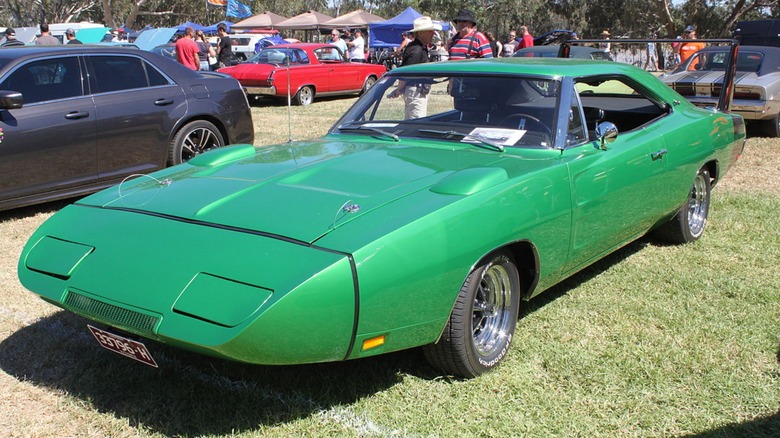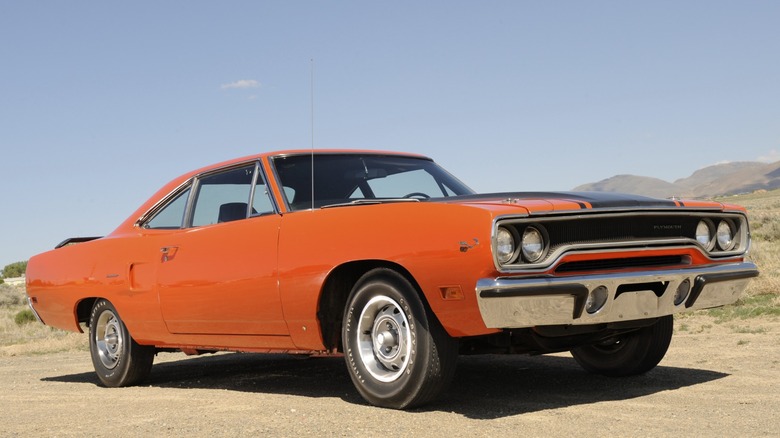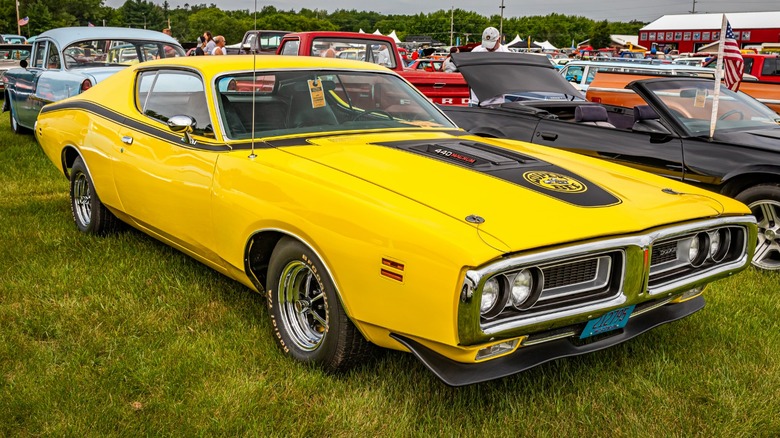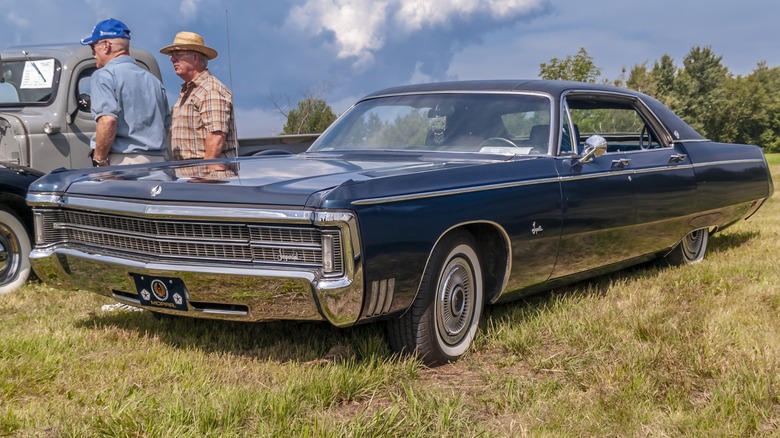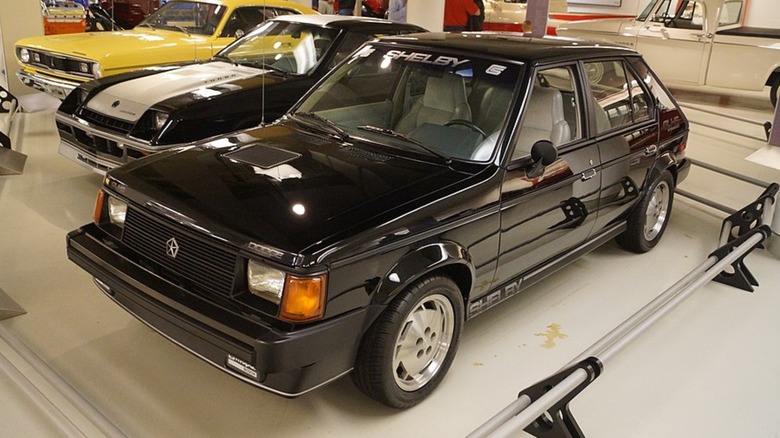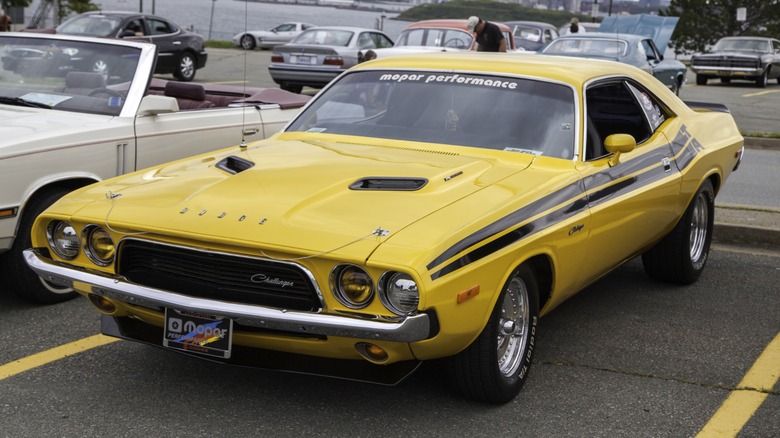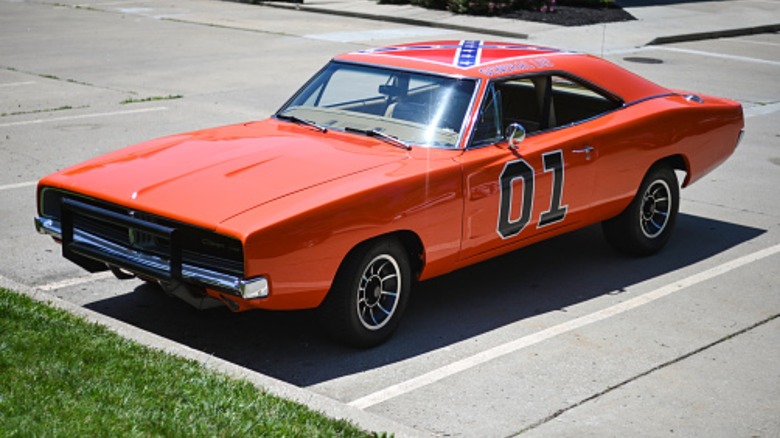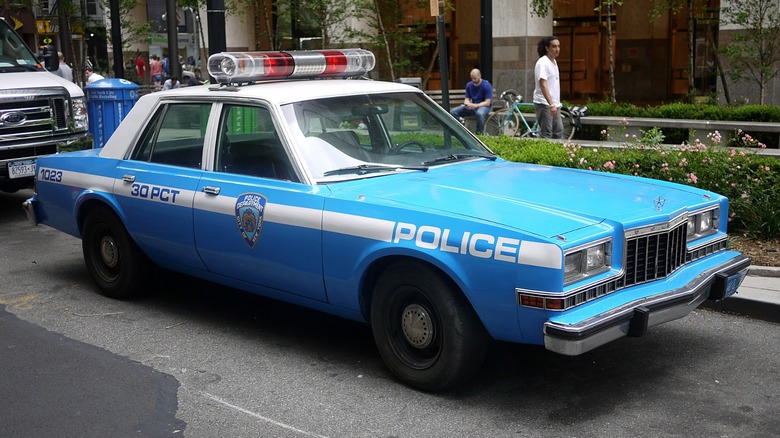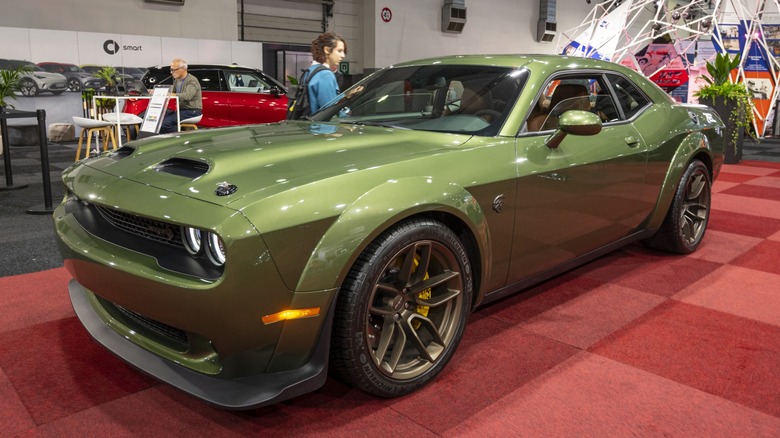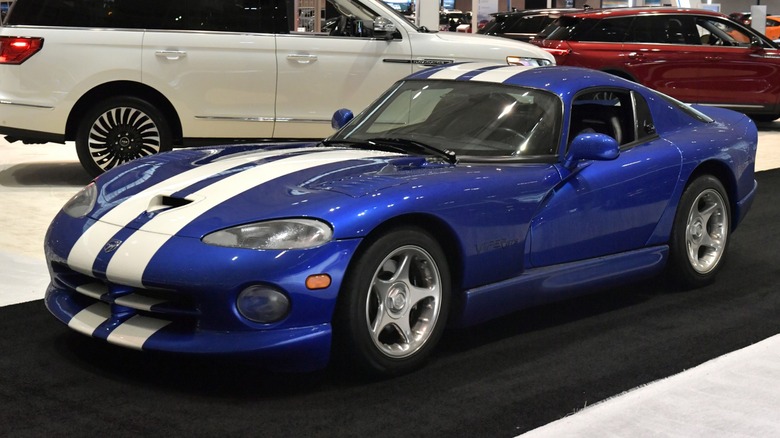10 Of The Most Iconic Mopar Cars Ever Built
Mopar is officially the name created by the Chrysler Corporation to brand its line of official parts and accessories. However, it has become more colloquially used to describe any model of car from the company. Today, Chrysler is one of the brands held by parent company Stellantis and includes Dodge, Chrysler, Ram Trucks, Jeep, Fiat, Alfa Romeo, Maserati, Peugeot, Lancia, Opel, Vauxhall, and Citroën among its massive portfolio.
Before the seemingly endless mergers and acquisitions beginning in the late '80s, the Chrysler Corporation consisted of just Dodge, Plymouth, and Chrysler. The corporation was started by Walter Chrysler when he first produced cars bearing his name in 1924. It then grew continuously and exponentially to become one of the "Big Three" automakers headquartered in Detroit.
For more than a century, Chrysler has built affordable cars for the mainstream of American society, with a few models inching into the luxury car territory. These cars have been known for being affordable, reliable, and easy to repair throughout much of its history. While the company has had some ups and downs over the years, many of its most successful models have become cherished classics by millions of people around the world.
The enduring style and cachet of a classic Mopar is something to be enjoyed and shared. Many of these cars have since become icons of the industry. Here are 10 of the most iconic to ever roll out of a Chrysler assembly facility.
Dodge Charger Daytona
By the late '60s, NASCAR racing was a fully developed and highly popular racing series. Manufacturers fielded cars in the series and were eager to deliver winning cars to the drivers taking the checkered flag. Wins on the track translated to sales on the floor. These efforts also led manufacturers to tweak their production cars available to the public in ways that could deliver an edge in the races. At that point, NASCAR was still closer to its roots as "stock car" racing, meaning the cars running the races were the same available at dealers.
For the 1969 model year, Dodge sought to give its popular Charger muscle car an advantage by adding some aerodynamic parts to the front and rear, along with a healthy dose of power under the hood. To qualify for NASCAR, Dodge had to produce at least 500 cars to sell to the public. With the power maxed out from its 426 Hemi V8, engineers created a long and pointed nose to graft the front bumper and added an unusually tall spoiler to the rear to take advantage of optimal airflow to create downforce, thus increasing traction.
The modifications proved to be successful as the Dodge Charger Daytona dominated the track that season and the next, winning six races in total. However, Dodge had ruffled some feathers, and its modifications were banned for the 1971 race season. This left us with roughly a thousand examples of this legendary car, turning it into a Mopar icon.
[Featured image by Jeremy via Wikimedia Commons | Cropped and scaled | CC BY 2.0]
Plymouth RoadRunner
For the 1968 model year, planners at Plymouth wanted to get in on the muscle car craze that had been gripping the country at the time. Having access to an array of excellent engines and solid platforms, the ingredients for success only needed to be combined with the right marketing strategy.
The new model was built on Chrysler's B platform, which was shared by other models of the day, such as the Dodge Coronet. It was a large, intermediate size popular with competing muscle cars and provided plenty of room for a big V8. Power came from a choice of three V8 engines, including the 383 with a four-barrel carburetor making 335 horsepower, the 426 HEMI with dual four-barrel carburetors making 425 horsepower or the 440 with triple two-barrel carburetors making 390 horsepower. No matter which engine was chosen, it provided ample torque for the big car to get moving.
The final part of the muscle car equation was marketing. In a stroke of genius, Chrysler paid Warner Bros. $50,000 to license the popular RoadRunner character from the cartoons featuring Wile E. Coyote. Everyone knew this cartoon back then, and the RoadRunner was famous for being fast enough to always outrun and outwit Wile E. Coyote. This also gave the cars a bit of fun lightheartedness that struck a chord with the public and made it a success. However, the icon eventually lost its luster towards the late '70s when a redesigned car with a fraction of the power came out in 1975, portending its eventual cancellation in 1980 after selling only 496 cars.
Dodge Super Bee
While this car could be lumped in with the Plymouth RoadRunner running on the same platform, the distinct marketing makes it something special all on its own. About six months after Plymouth released its 1968 RoadRunner, Dodge released the Super Bee.
The Super Bee was a large two-door that came with only two engine choices: the base 335-horsepower 383 V8 or the 425-horsepower 426 HEMI V8. Dodge was meant to be the entry-level brand for Chrysler, and the Super Bee was meant to be an affordable way to get lots of power in an attractive package. While many people opted for the more powerful HEMI car, scores more received the base model. A portion of them ordered one completely stripped down with only the bare essentials — no air conditioning, no radio, no power steering, no frills whatsoever.
The Dodge Super Bee was a moderately popular car but was discontinued after the 1971 model year. However, the name was revived for the modern breed of Mopar muscle as its popular Charger was making a name for itself as the new technology-laden muscle car. From 2007 to 2009, Dodge offered the Charger Super Bee with a new 6.1-liter HEMI V8 under the hood. The modern Super Bee received 425 horsepower, which made it good for a 0–60 mph time of just 5 seconds, a fitting tribute to the original, featuring the same "angry bee" logo on the rear quarter panel that made these cars unique.
Chrysler Imperial Lebaron
Icons of the auto industry are usually recognized for being the most impressive performance cars that combine style with power to make stunning and exhilarating automobiles. Yet, other models sometimes stand out for other equally impressive characteristics. For example, luxury sometimes sets a bar for others to attempt to attain, while the Chrysler Imperial Lebaron sets the bar for overall length.
In the early '70s, full-size sedans grew significantly from the already large cars that filled the market segment. The 1973 Chrysler Imperial Lebaron set the bar for length high, with its overall linear dimension topping out at 235.3 inches, making it the longest regular-length production passenger car ever made — the Cadillac 75 was longer, but it was a factory-built stretched model.
But length is not everything when talking about the Imperial. It was also a supremely luxurious car. Built at a time before luxury meant having dozens of electronic gizmos and 15 and a half screens surrounding the passengers, the Imperial swaddles its passengers in thickly padded seating in either a fine and soft leather or supple fuzzy velour.
The girth of the car sitting on a soft suspension setting gave it driving characteristics not unlike a boat, which meant few bumps or road imperfections could be felt, although cornering is another story. With the amazing amount of room to stretch out and enjoy the ride, the Imperial is qualified to be an icon of one of America's favorite pastimes, the road trip.
Dodge Omni GLHS
The late '70s were not kind to Chrysler, and the company teetered on the brink of collapse, with many in management feeling bankruptcy was imminent. Yet, thanks to a government bailout and some shrewd decisions made by then-new CEO Lee Iacocca, it survived. Part of what kept this industry giant from succumbing to market forces was the success of new car platforms championed by Iacocca himself.
In response to the Volkswagen Golf, which was already selling well in the United States, Chrysler released the Dodge Omni and Plymouth Horizon. While they would not save Chrysler alone, the L-platform used on them was modified and turned into the K-platform, which is credited with saving Chrysler. After turning the company around and repaying its government loans, Chrysler could stretch its legs and experiment a bit more. To this end, Carroll Shelby was hired to inject some spunk into its lineup.
Shelby took the diminutive Omni and spruced it up by adding a turbo and tweaking the handling to make a true hot hatch. Tame by today's standards, with just 146 horsepower, it was a runner in its time. It was called the Omni GLH, which stood for "Goes Like Hell." Always wanting to do more, Shelby continued tweaking the little car to squeeze a few more horses out of it, so he created a second act to the GLH, the GLHS, or "Goes Like Hell, S'more." Power was increased to 175 horsepower thanks to a larger turbo with a better intercooler and 12 pounds of boost. Even though the speedometer maxed out at 85 mph, the GLHS was capable of 130.
[Featured image by Greg Gjerdingen via Wikimedia Commons | Cropped and scaled | CC BY 2.0]
Dodge Challenger
While the Ford Mustang and the Chevrolet Camaro raced each other up the sales chart, Chrysler was left without anything at the starting line. Not one to sit idly by and let others rake in all the profits, management got to work to build a pony car of their own, which did not arrive until 1970. However, the wait was worth it.
The Dodge Challenger arrived for the 1970 model year, instantly gaining fans who adored its low and fat style, coupled with the powerful V8 engines Chrysler had been perfecting for years. Dodge meant for this car to be the pony car everyone wanted and lavished it with options. Almost any engine was possible, with the trusty slant six filling in the base models, with the range going up to the 440 V8 topped with a six-pack and trio of two-barrel carburetors. Manual transmissions were offered, as well as the TorqueFlite automatic, which could be ordered with a slapstick shifter for quick and dramatic shifting while sailing down the quarter-mile track. This car was meant for hard driving and came with good looks as a bonus.
The muscle car era soon faded, and the Challenger morphed into a Mitsubishi-sourced import that paled in comparison to the original. Yet, a revival of it came about with the 2008 Challenger that revived the old name and brought back the classic lines that made it look so good in the first place. Of all the retro revival cars that appeared at this time, the Challenger did it the best, which is probably why the icon is still on sale today.
Dodge Charger
The attractive sedan sold by Dodge today that comes with Charger badges is a good car, especially when it comes with one of the insanely powerful SRT engines. However, there is a reason why the second generation of this model, produced from 1968 to 1970, is the true icon.
The Charger was made to be the car of choice for NASCAR, and it was built and marketed to buyers who would appreciate that. Offered with a range of engines, including the high-output 440 and 426 HEMI, speed was never a problem for this car. Furthermore, the two-door fastback design with the long pillarless windows proved to be an attractive look that seemingly everyone liked. This made for a perfect recipe for a desirable car that sold reasonably well and performed on the track. But that is not what makes it an icon.
The most notable distinction of the Charger is that it was chosen to star as the General Lee in the Dukes of Hazzard TV show. Originally showing from 1979 to 1985, the show about a couple of good 'ol boys causing trouble while trying to steer clear of the law in a small southern town was wildly successful and kept millions of young people glued to the screen every week. Its popularity spilled all out into popular culture and spawned toys and other merchandise for years. It may be the most famous TV car ever filmed, and that makes it highly iconic.
Dodge Diplomat
We know that iconic cars don't necessarily have to be the ultimate sports cars, but an icon can sometimes appear out of left field, especially if you haven't given it much thought. However, this motoring legend takes its historical place for an altogether different reason than most.
The Chrysler M-body underpins some of the company's best-selling models from the '80s. The highly important family sedan ruled the streets before the SUV overtook the driveways of suburbia. While Chevy had its Caprice and Ford sold the LTD, Chrysler had the Dodge Diplomat and Plymouth Gran Fury — to a lesser degree, there's the Chrysler New Yorker, but it was more of a luxury model. While the Diplomat and Gran Fury ferried families around for countless miles in this period, they did double duty working with the police.
The Mopar police car is one of the most memorable images from the period of latch-key kids, Nintendo, and Pee-Wee's Playhouse. "The Big Three" all sold police versions of their large sedans, but, for some reason, it feels as though all but a few cop cars of the era were a Mopar. While that certainly can't be true, nostalgia has a way of playing tricks on the brain.
Regardless, these boxy masterpieces of mediocre engineering roamed for years looking for midnight prowlers and speeding drivers, keeping officers bathed in relative comfort — they were nice to drive and had plush interiors, after all. And so, the M-body gets icon designation for its sheer ubiquitousness as a sign that we are all being protected or closely watched, depending on your perspective.
Dodge Challenger SRT Hellcat
Although the Challenger is an icon in its own right, the SRT Hellcat version deserves special recognition. The modern Challenger may have sourced its styling from the past, but the engineering is all modern. At one time, thoughts of making a car with 500 horsepower seemed like pipe dreams, with the only way to attain such power was to install full-on racing engines in passenger vehicles, a proposition that would be as ludicrous as it would be unfeasible. Yet, through science and engineering over time, here we are, with unimaginable amounts of power available at your local Dodge/Ram dealer right now.
The first SRT Hellcat debuted in 2015, featuring a supercharged and direct-injected 6.2-liter HEMI V8 pumping out 707 horsepower. It sent shockwaves through the press and soon began tearing it up at tracks nationwide. But then, the ante had been upped. It was followed by the SRT Demon in 2018, this time raising the power level to 840 horsepower. Somehow, that seemed insufficient, so engineers put together the 2023 SRT Demon 170, with an astonishing and neck-breaking 1,010 horsepower for $100,000. This one pushed the limits of what could be done with Chrysler's V8 engine, but with more than 1,000 horsepower already, no more pushing really needs to be done, right?
Dodge has announced it will be shifting its muscle cars toward electric power in the near future, so this icon of ridiculously unnecessary power shall serve as a sendoff of an American icon of speed.
Dodge Viper
Any discussion of legendary cars built by the Chrysler Corporation would be wholly inadequate should the Dodge Viper be left out. When it first came out in the early '90s, it was absolutely bonkers and remained so until production ended in 2017. When the car was first released in 1991, it was obvious this was a machine built for one thing: all-out speed and nothing else.
When creating the first Viper, the design team wanted it to have a V10 from the start. One had been lurking in Chrysler development already but was meant to be a high-torque unit for future truck models. The engineers made some changes to the design, cast it in aluminum for the block and heads, and tuned it for high horsepower for a new sports car. Even though they had some input from Lamborghini (which was owned by Chrysler at the time), the engine was a traditional American unit with pushrods and two valves per cylinder. The horsepower of the debut model was 400, which made the lightweight car a veritable rocket.
While the first car was austere — it did not have windows at first — it became successful enough to stick around for almost 20 years. Upgrades came along, and the interior eventually became more refined and a bit more civilized, but the power and handling remained, with gradual improvements as well. By the last year of production, horsepower was up to 640, the engine had grown to 8.4 liters, and the top speed broke 200 mph. Several reasons combined to cause its discontinuation, but the Viper will forever be Dodge's most iconic American-style supercar.
